Although Hoa Binh’s geographical characteristics have causedmany difficulties in developing its infrastructure and economy, the mountainous topography here is a godsend in terms of tourist attraction.
Together with mountains are green valleys, surrounded by primitive forests with thousand species of rare plants and animals and hundreds of caves and streams that offer tourists numbers of tours like hiking, walking, hunting or hot spring.
Going 30km further from Hoa Binh Town, travelers may recognize hotels and inns which offer hot-spring service on both side of the road. The area has a source of mineral water from Kim Boi hot-spring. Mineral water here is naturally kept at 36oC and is proven to be able to drink and bath. The water may help healarthritis, gastritis, and hypertension.
Kim Boi hot spring is popular among domestic tourists.
Thung Nai is another ideal spot for ecotourism where people can goby travelling on romantic green Da River through winding currents and wonderful views.
Thung Nai is especially suitable for tourists who seek a peaceful time with family or friends, forgetting all about the stresses of busy life and enjoying stunning natural wonder. Thung Nai is regarded as “Ha Long Bay on land”.
Other ecotourism destinations for travelers in Hoa Binh are Da Bac and Luong Son District with primitive scenery. However, tourism there is not as developed as the first two sites.
Hoa Binh does not not lack antique and historic relics; in fact, the province preserves 37 national relics and 18 regional vestiges. The residents here consist mainly of Muong ethnic group and various ethnic minorities such as Thai, Yao, Tay and Hmong. This contributes a lot to the cultural diversity of this mountainous province as well as the development of its tourism industry.
At present, there are more than 50 ethnic tourism hamlets within Hoa Binh available to visitors both inside and outside Vietnam. Lác Village and Muong Village are the most well-known sites that have been officially developed for cultural and ecotourism by Hoa Binh Authorities.
Visitors are advised to visit Culture Tourism Village in Dong Mo, Son Tay, Hoa Binh. The village is composed of Vietnamese ethnic traditional architecture, established with the purpose to preserve and promote Vietnamese culture to the world.
Coming to Hoa Binh on lunar Tet Holiday, ones may have chances to attend a wide range of festivals organized by the locals in different areas and by different ethnic groups. To illustrate Chua Tien Festival in Lac Thuy Prefecture, “Khai Ha” Carnival of Muong Bi people and “Xen Ban Xen Muong” Carnival of Thai ethnic group.
Here are the top tourist sites in Hoa Binh:
Dam Da
This is a favorite destination in Phu Lao commune, Lac Thuy district, Hoa Binh.
While such names as Hoa Tien grotto, Tien Phi grotto, Mai Chau valley, Hoa Binh hydroelectric dam are tourists highlights, Dam Da seem to be an obscure historical site.
Dam Da is actually a vast complex of temples, pagodas and caves in the district, including Trinh temple (also known as Quan Trinh), Mau temple, Tien pagoda and etc. The temples and pagodas here are closely related to legendary characters in Vietnam’s history such as Au Co mother, Lac Long Quan Father, Hoang Bay Mandarin and Tam Toa Thanh Mau.
In Tien cave and Ho cave (other name: Nguoi xua cave), archaeologists have found traces of ancient people, contributing a great deal to the historical study. Now Tien pagoda has received national recognition as a historical cultural site and is attracting many visitors to come here for sightseeing or worship.
Apart from historical and cultural values, Dam Da is marked by its natural spectacular caves. There are Tam Toa cave, Thuy Tien cave, Cung Tien cave, Hoang Muoi cave, Co Chin cave etc. One will find it extremely difficult to list all the caves here. When coming into each cave, tourists will be taken by surprise at the gigantic and illusory stalagmites and stalactites.
Dam Da is most crowded in spring, particularly from January to March when there is Chua Tien festival. It is also convenient for tourists to visit Huong pagoda nearby – a famous attraction in My Duc district, Hanoi.
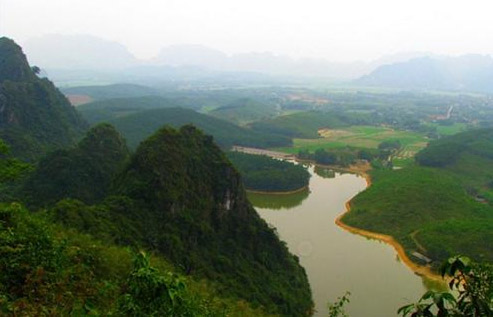         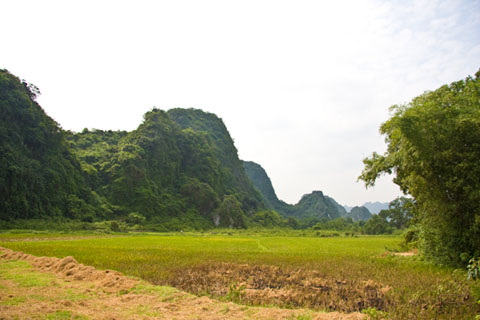 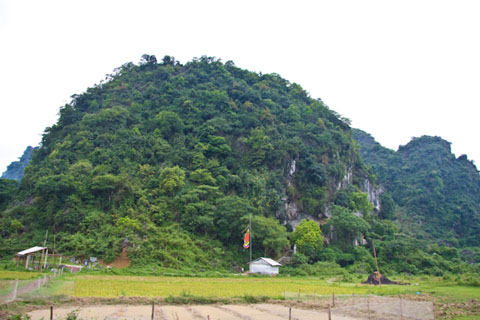 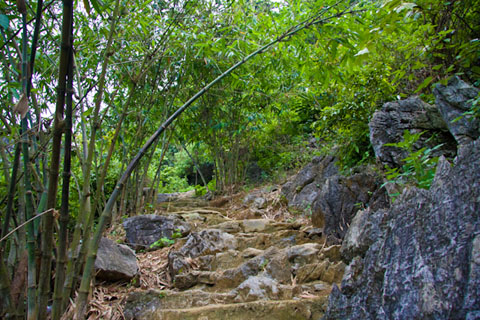 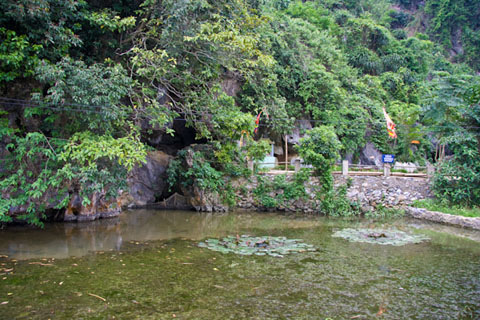 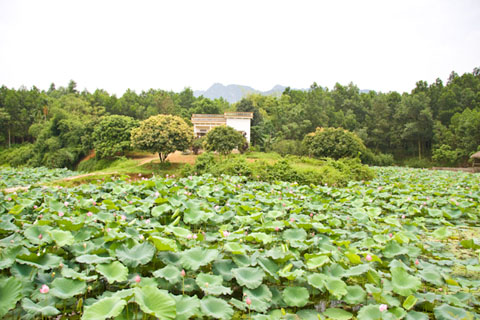 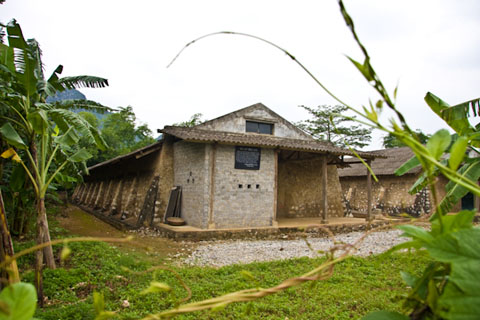    |
Thung Nai
Thung Nai impresses anyone who sees it from the very first time with the harmonious combination of mountains, lakes and charming houses nestled in between the high hills.
Located in Cao Phong district, just about 110km north-east of Hanoi center, Thung Nai is a popular destination for weekend retreat of both tourists and Hanoians who can afford the time and cost.
Once upon a time, Thung Nai was a great valley covered by the vast forest, which is home to numerous deer. Hence, the local people call it “Thung Nai” which means “the Valley of deer”.
Since the 1980s when the Da River hydropower plant was built, Thung Nai has become a huge lake containing water served for the operation of this hydropower plant. All initial surrounding high mountains became floating green islands and created magnificent scenery. Thung Nai is called “the second Ha Long Bay on land” in the North of Vietnam (the first position was taken by Tam Coc Bich Dong in Ninh Binh province).
Most tourists traveling to Thung Nai choose the Windmill guesthouse, which is located on Friends Island, as an ideal place for a comfortable and relaxing stay. The guesthouse area consists of a large two-storey redbrick house and a windmill offering visitors a breath-taking view of Thung Nai, a stilt house functioning as a communal dining place, and a tennis court lying in the lush orchard. The Windmill itself is often regarded as an attraction of Thung Nai.
Staying in the Windmill, tourists will be served local specialties like grilled Muong pork, smoked or grilled Da River fish, or fish sour soup, and straw wine. After the dinner, tourists, especially the youngsters, often gather for the campfire in front of the guesthouse, watching the sparkling fishing boat floating in the lake by night.
Waking up in the morning, tourists can refresh themselves by breathing the fresh air and enjoying the natural beauty in early morning. A boat tour to discover sites around the lake in Thung Nai like Ba Chua Thac Bo temple, Thac Bo grotto (with a lot of stalactite in various shapes), Ngoi Hoa village of Muong people is also a good option.
Tourists who come here on Sunday morning can drop by Thac Bo floating market, just 20 minutes by boat from the Windmill, where they can buy fresh fish, shrimp caught by local people.
Thung Nai is said to be most beautiful in the autumn, when the water level reaches the highest and the valley is filled with the romantic lake water. Try visiting Thung Nai this time to enjoy the landscape.
         |
Mai Chau
Coming to Mai Chau, travelers will be warmly welcomed by the picturesque scenery of Mai Chau lying in a green valley of paddy fields dotted with rows of stilt houses.
Stilt houses border both sides of the roads. The houses are quite large with palm leaf roofs and polished bamboo-slat floors. The kitchen is located in the center of the house; the cooking as well as the making of the colorful tho cam, the material used by Thai minority to make their clothes, takes place in the kitchen. The windows are large and decorated with patterns. Each house also has a pond to breed fish.
The Sunday market brings a lot of people into town. People from different minorities living in the mountains come to Mai Chau market to sell their specific products: honey, bananas, corn, and tho cam made by skilled Thai women.
The Sunday market is also an occasion to enjoy traditional Thai dishes and to participate in traditional dances. Thai dancing and singing is something that visitors cannot afford to ignore. There is the traditional dance show for tourists, which starts at 8:pm and provides tourists joining tours in Vietnam with a very impressive experience.
Mai Chau can be a base for some trekking tours to the villages around, and spending one night at one of the stilt houses in Mai Chau, tourists have chance to enjoy the folk dances and songs that are accompanied by Gong music, as well as experience the feeling of drinking Can Wine – an important cultural symbol for ethnic minorities in Hoa Binh. They can also enjoy the minority specialty dishes including rice cooked in bamboo and grilled meat.
        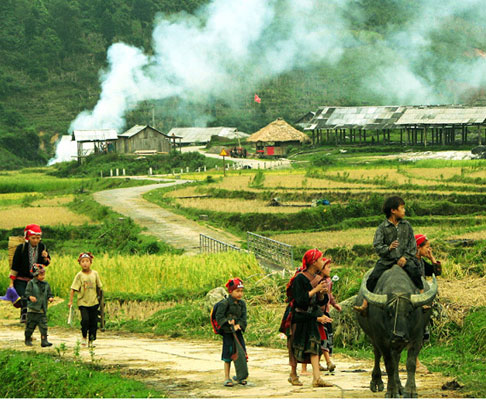 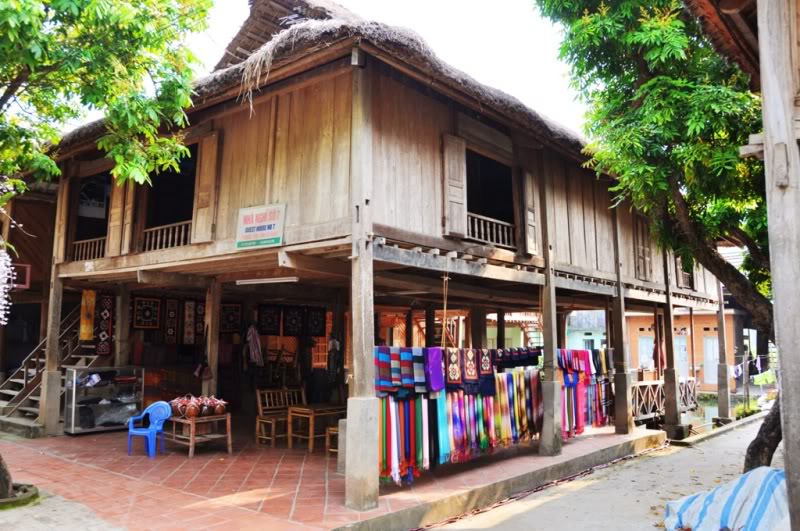        |
Kim Boi Spring
For those who want to take a day off after long tiring journeys, Kim Boi Hot spring is the right place. With a 30km drive from Hoa Binh town, tourists can easily access Ha Bi commune, Kim Boi district. The district covers an area of 682 km2 and lies in the hot spring of a mineral stream.
Clear water continually spouts from the fountains, normally between 340C and 360C. According to some scientific tests, Kim Boi water resources can reach the required standard for quality; therefore, it is suitable for drinking and bathing.
In fact, the Kim Boi mineral water is bottled for refreshment. It has almost the same composition as certain famous foreign brands of mineral water. In addition, it is believed that heated water can hold more dissolved solids and have a high mineral content including calcium, lithium or radium.
As a result, this water is highly effective therapy for rheumatism, intestinal diseases, stomachache, high blood pressure etc. This can even be a good location for rehabilitation clinics for those with disabilities.
As for tourists, depending on their budget, they can choose to stay at one of many hotels in the resort area. Wherever they are, the same point is that they can hear the sound of water.
   .jpg?width=0&s=77wITppwu_zxo2WwO3ppzQ)  .jpg?width=0&s=fiFf2TapP-AsQuj4gdUUow)  |
Hoa Binh Dam
The most well-known feature of Hoa Binh is Hoa Binh Dam for hydro-electric purposes.
Construction on the rockfill dam started in November 1979 and took nearly 10 years to complete. The dam is now one of the largest and most important dams in Vietnam.
It is 128m in height and 970 m in length. Power is generated by utilizing eight turbines with a capacity of 240 MW, making up the total capacity to about 1,920 MW. The annual power is approximately 8,160 GWh.
The reservoir which was formed when the Da River was dammed runs through Hoa Binh’s center. 168 workers died during the construction of the Dam and there is now a monument to their memory at the dam site.
The Hoa Binh Dam plays an indispensable part in preventing floods, and producing electricity, irrigation and transportation.
This is a meaningful construction for the process of industrialization and modernization of the country. It is the symbol of friendship between Soviet Union and Viet Nam, too.
Annually it attracts a quite great number of tourists because of the majesty of the surface area, which is so large that it creates an impressive architectural, cultural and social complex.
          |
Tien Phi Cave
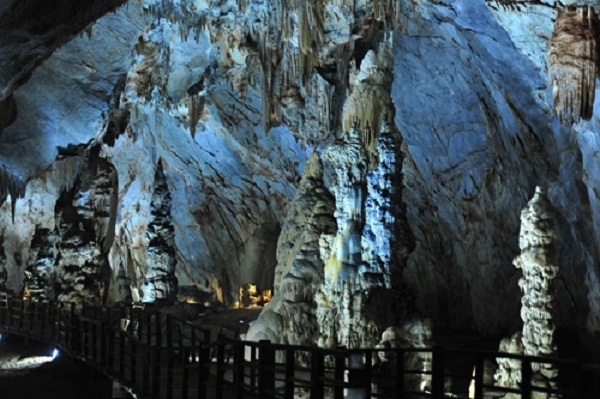
After visiting Hoa Binh Dam, tourists should not miss the chance to go to Tien Phi cave on their path to Hoa Binh.
The cave is situated on Thuc’s hill-top (also called in other name Thung Phi). The entry mouth is considerably narrow, followed by a gentle slope.
Walking 10 more meters, you will see that because of the high and dry cave top, the atmosphere inside is cool and comfortable. As you get farther into the cave, the more excited you may get.
Despite the rough ground, you can still see stalactites that jut out in many funny and lively shapes, exciting visitors’ imagination. Much more interestingly, thanks to light from the hole on the cave’s roof, those stalactites become spectacular when bright light is shone on them.

Right in the middle of the cave is a charity box and an altar for those who want to pray. This scene is so tranquil that it is like a sacred and mysterious castle among the world of shaped stones.
Walking 10 more meters to your left, you will see a dreamy fairy whose hair falls over her shoulders on an iridescent hammock. You can find many other rocks in the shape of Buddha, Jesus, leopard and lion etc.
It is here in Tien Phi cave that visitors are exposed to a wide range of fairy tales based on theNatural masterpieces.
Lac Hamlet

Lac Hamlet is, approximately 135km from Hanoi and 60km from Hoa Binh City. The town is situated between tall cliffs and is surrounded by bright-green paddies, making it a sight to behold; the beauty of the place for many tourists to stay longer than expected.
At sunset, it is slightlycold andtourists stroll on the path in the hamlet to enjoy the sweet scent from the paddy fields and buy some goods from the Thai people. In front of each stilt house, people put small tables displaying their brocaded products, such as purses, handbags and Pieu scarves (a traditional scarf of the Thai people).
They also hang an abundance of long cloth rolls andAo com(a short traditional shirt of the Thai People) with distinctive patterns. In addition, unique products like wooden bells for buffaloes,bamboo flutes, bows and cross-bows and knives are also displayed for sale. All the products are handmade by the Thai people.

Drumbeats can be heard during the night as the hamlet’sbandand many families organize a bamboo pole-dance performance. A dancing team often includes beautifulgirls who have learned dancing, singing and even a foreign language to receive tourists. Each performance often ends with a bamboo dance. The girls often invite guests to drink ruou can (wine drunk from a jar through pipes).
Currently, Lac Hamlet has 25 stilt houses for tourism that are built in a chessboard architectural style. An overnight stay in a stilt house costs VND 50,000-70,000 per person. After the party ends, tourists curl up in a sui blanket made from the bark of an Antiarias tree to have a good sleep on the floor of the stilt house.
Thac Bo Temple and Thac Bo Cave

Thac Bo temple
Located 20km from the provincial city of Hoa Binh, Thac Bo Temple and Thac Bo Cave have become favorite spiritual tourism destinations of pilgrims across the country, due to their amazing natural scenery.
Bo Temple was built in 1431 in Hoa Trang Commune in commemoration of the contributions of Dinh Thi Van, a H’mong ethnic minority woman and her Dao ethnic minority friend who had encouraged locals to raise food and help Le Loi’s troops in the fight against foreign invaders.
After their death, locals called them Thac Bo Queens and built a temple in Thac Bo Lake’s heart in acknowledgement of their contributions. In 1979, the temple was moved to a higher place in Cao Phong District’s Thung Nai Commune and Da Bac District’s Vay Nua Commune to give space for the construction of Hoa Binh hydroelectric dam.
Annually, the locality holds a three-month long festival starting on the seventh day of the first lunar month in commemoration of the contributions of the two women.

Thac Bo Cave
Although the temple is not big like others, it lures visitors’ attention with a collection of 38 statues of different sizes and spectacular and poetic landscape around it. In the lunar New Year festival, every day the place attracts thousands of pilgrims to pay tribute to the two women and pray for a happy and prosperous year.
Another famous place is Thac Bo Cave in Bung Hamlet, Ngoi Hoa Commune, Tan Lac District, which was recognised as a national scenic relic by the Ministry of Culture, Sports and Tourism in 2009.
The fabulous cave offers visitors the full experience of cool and fresh air and natural beauty of magnificent and spectacular stalactites of different sizes and shapes, formed over hundreds of thousands of years. Inside the cave, there is a rest place for tourists and an area to worship for Buddhists, those who worship other gods and to pay respect to Uncle Ho.
In the dry season, visitors have to climb 100 stone steps from the foot of the mountain to the cave’s entrance but in the rainy season, bamboo rafts take them straight to the cave’s mouth as the water in Thac Bo Lake rises up there. From there, travelers can enjoy the breathtaking beauty of the area, the masterpieces of nature, and the greatness of mountains.
Together with Thac Bo Temple and Thac Bo Cave, tourists can visit other attractive places, such as Trach stream, Bo floating market on Sunday mornings, Ngoi Hoa Cave, Hoa Binh hydroelectric dam in Hoa Binh Province and enjoy delicious dishes, like grilled fish, roasted chicken, meat, boiled bamboo shoot, fine “Tao meo” (a kind of apple in north-western provinces of Vietnam) cider and boiled vegetables.
Giang Mo village

Giang Mo village, located about 10km to the west of Hoa Binh City, is known as an attractive community-based tourism destination with specific cultural values of Muong ethnic group.
The special attraction of the village is 100 houses-on-stilts of Muong people in the valley. Along with the traditional stilt houses, Muong people in Giang Mo have preserved many ancient production tools made of natural materials (wood, bamboo…) as water supply system, rice mortars, hunting crossbow…
Currently, Giang Mo has 45 households participating in community-based tourism. These households pay attention to environmental protection: build toilets and bathrooms to fit tourists’ demands. In 2010, the culture house of the village operated with the area of 500m2. There, Muong cultural life is reconstituted through unique art and cultural activities of the villagers.
Compiled by Pha Le
